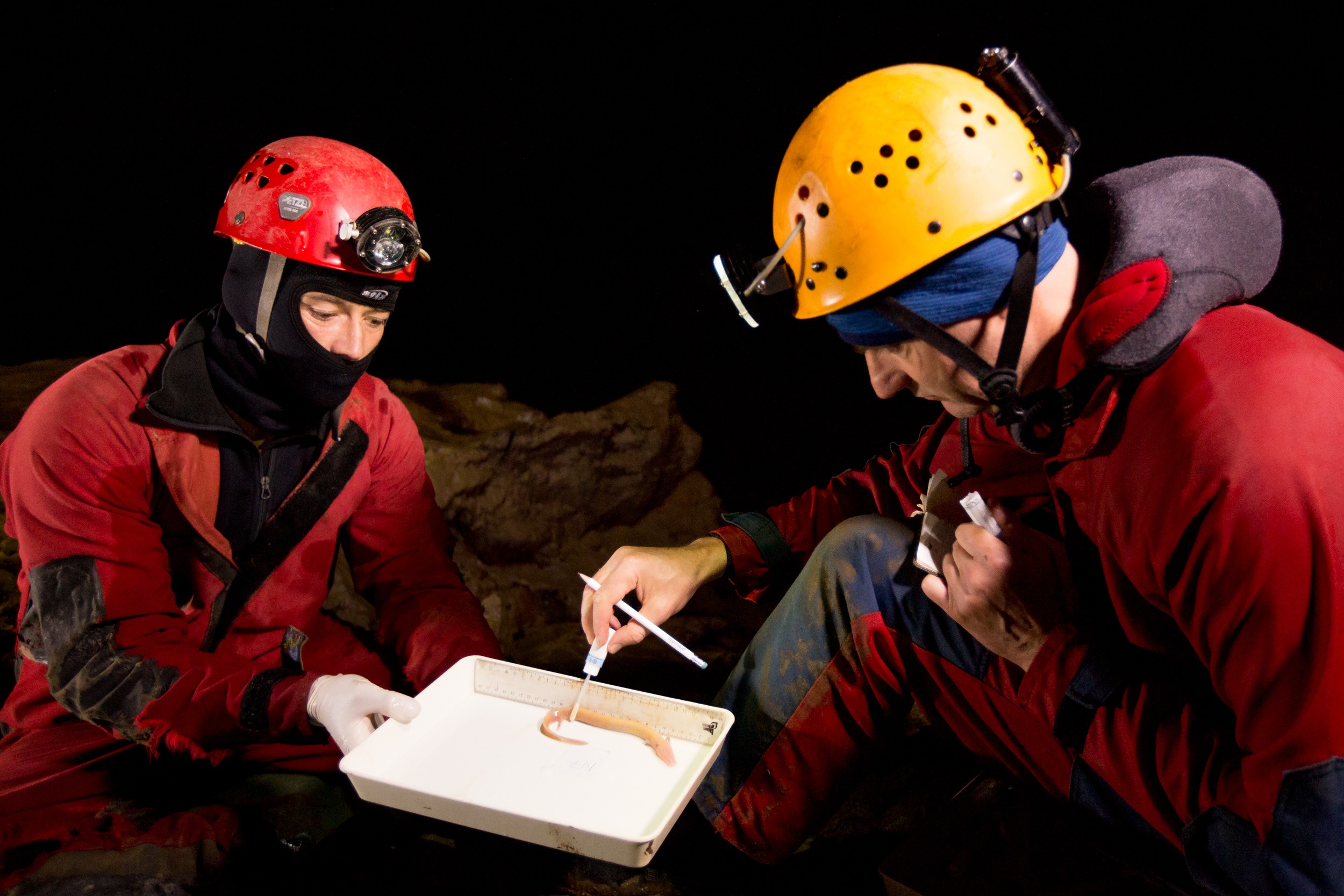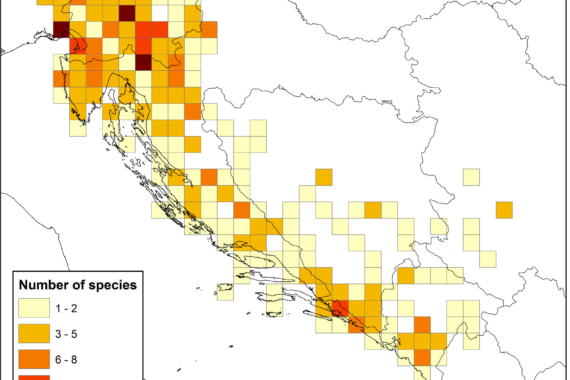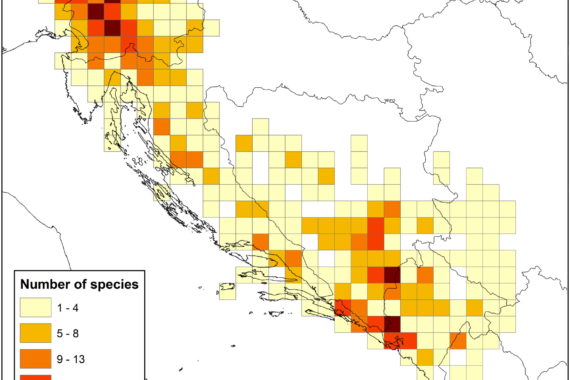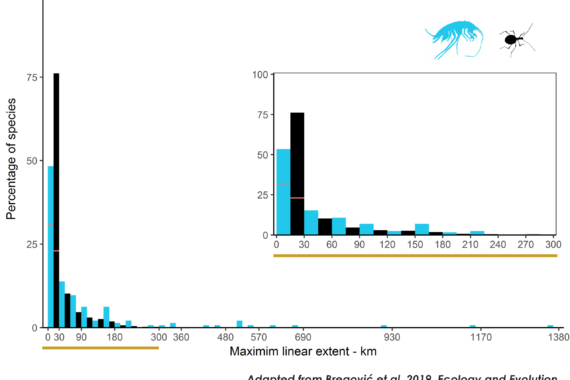Subterranean species are narrow endemics and as such represent an important part of our world’s natural heritage. However, population sizes, their vulnerability to environmental stressors and potential threats have rarely been studied. Despite this knowledge gap, theoretical predictions suggest that many subterranean species are vulnerable per se. First, due to limited food sources it is reasonable to expect that these populations are smaller in comparison to the epigean ones. Second, their dispersal is limited and population growth is slow. For this reason, recovery from local extinction is long lasting. Third, the spread of pollutants in the subterranean environment is unpredictable, and retention times of dangerous chemicals in groundwater are extended. In porous rock, connectivity depends on water levels, which means that chemical spills or any other disturbance on the surface can affect even distant populations in the subsurface.
Subterranean species deserve protection per se, however, protecting these species is of a direct benefit to global human society. Subterranean species are involved in biological processes taking place within the subterranean realm. These species enable normal functioning of subterranean ecosystems, providing certain services, like drinking water. We integrate basic research on key groups of organisms to assess their endangerment status and to establish their monitoring. Our activities include four aspects:
- we combine development of barcoding as a tool for routine identification, with fieldwork to determine accurate species distributions,
- we apply molecular population genetic methods to estimate population sizes as well as between-population connectivity, in order to define species IUCN status,
- we integrate different metrics of biodiversity to determine regions that need to be protected with highest priority,
- we develop non-invasive genetic monitoring for key species, like the olm, Proteus anguinus, and the cave shell Congeria jalzici.





